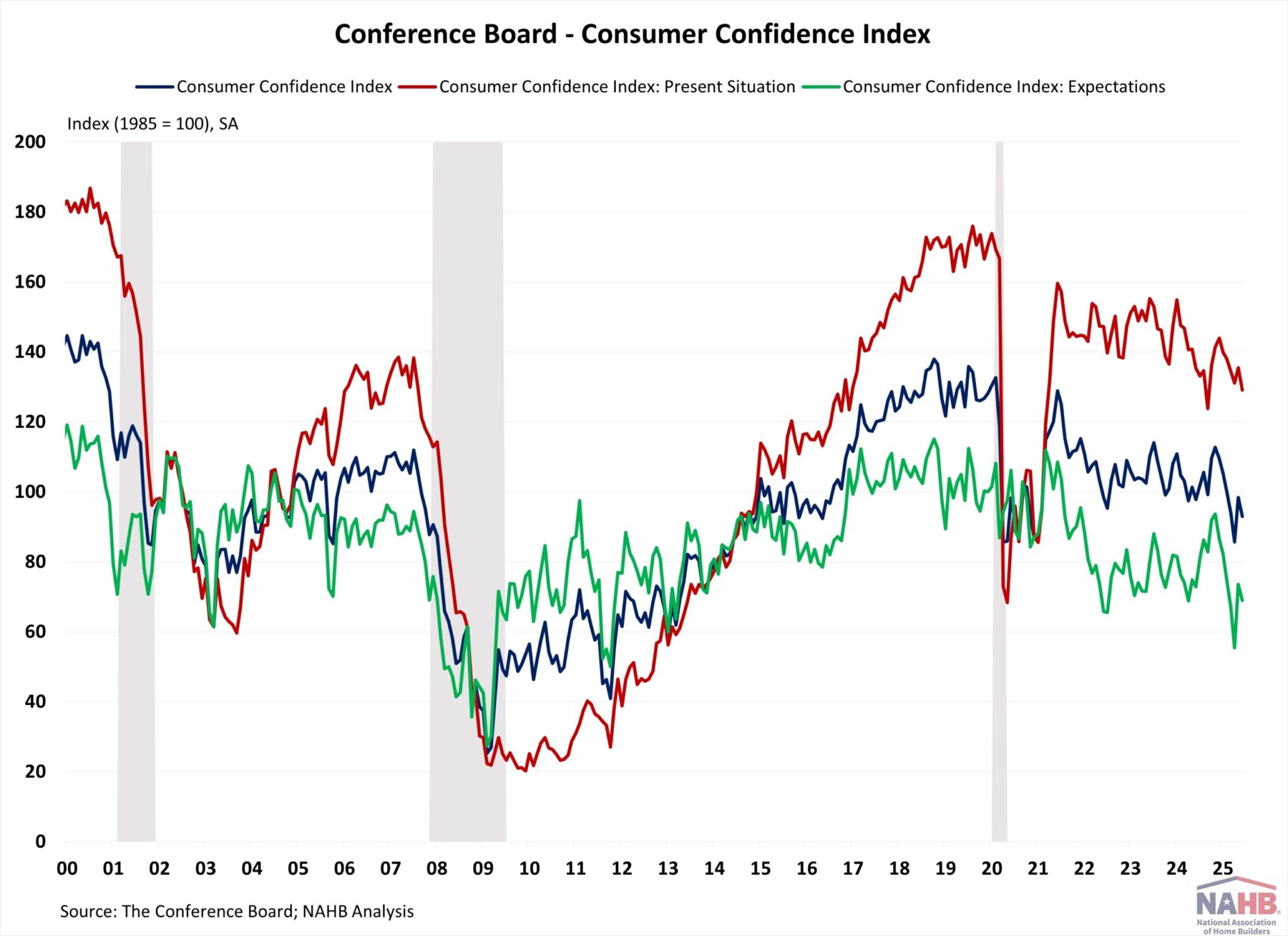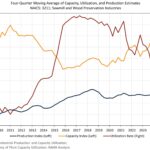After a strong rebound in May, consumer confidence resumed its downward trend in June. Consumers remain concerned about the economy and labor market amid ongoing uncertainty, especially around tariffs. This month’s decline erased almost half of last month’s sharp gain, suggesting continued volatility in consumer sentiment.
The Consumer Confidence Index, reported by the Conference Board, is a survey measuring how optimistic or pessimistic consumers feel about their financial situation. This index fell from 98.4 to 93.0 in June, the second lowest level since February of 2021. The Consumer Confidence Index consists of two components: how consumers feel about their present situation and their expected situation. In June, the Present Situation Index decreased 6.4 points from 135.5 to 129.1, the lowest since October 2024; and the Expectation Situation Index dropped 4.6 points from 73.6 to 69.0. This is the fifth consecutive month that the Expectation Index has been below 80, a threshold that often signals a recession within a year.
Consumers’ assessment of current business conditions turned negative in June. The share of respondents rating business conditions “good” decreased by 2.4 percentage points to 19.0%, while those claiming business conditions as “bad” rose by 1.6 percentage points to 15.3%. Meanwhile, consumers’ assessments of the labor market cooled somewhat in June. The share of respondents reporting that jobs were “plentiful” fell by 1.9 percentage points at 29.2%; meanwhile, those who saw jobs as “hard to get” decreased by only 0.3 percentage points to 18.1%.
Consumers were more pessimistic about the short-term outlook. The share of respondents expecting business conditions to improve fell from 19.9% to 16.7%, while those expecting business conditions to deteriorate declined from 25.4% to 24.0%. Similarly, expectations of employment over the next six months were more negative. The share of respondents expecting “more jobs” decreased by 3.2 percentage points to 15.4%, and those anticipating “fewer jobs” fell by 0.3 percentage points to 25.9%.
The Conference Board also reported the share of respondents planning to buy a home within six months. The share of respondents planning to buy a home fell slightly to 5.9% in June. Of those, respondents planning to buy a newly constructed home decreased to 0.2%, and those planning to buy an existing home dropped to 3.2%. The remaining 2.0% were planning to buy a home but were undecided between new or existing homes.
Discover more from Eye On Housing
Subscribe to get the latest posts sent to your email.
This article was originally published by a eyeonhousing.org . Read the Original article here. .



